How to Find a Boat With Long-Term Value
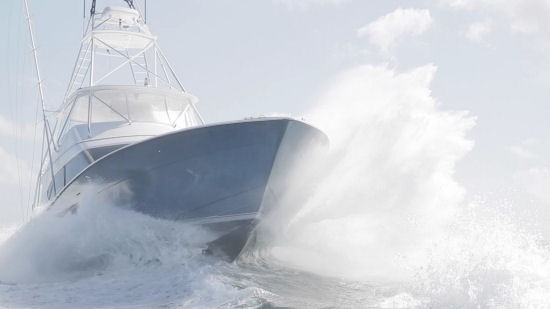
As boats become more expensive and sophisticated, smart boat buying is now a matter of finding "long-term value." Wait, isn’t a boat with long-term value an oxymoron? If it is the right boat and intended to be kept for 10-15 years or more, probably not. Each year, boats are becoming more expensive as the price of materials, labor, and environmental regulations increase, inflation notwithstanding. Good boats bought today can be gems 20 years from now, with proper maintenance.
Gone are the days when a new boat would be bought with plans to move up in a couple of years to a bigger boat. Now, buyers are more carefully considering their purchase and are planning on holding on to their boat for more years than before, maybe even passing it on to their children. As a result, now more than ever, it is important to get boat selection right.
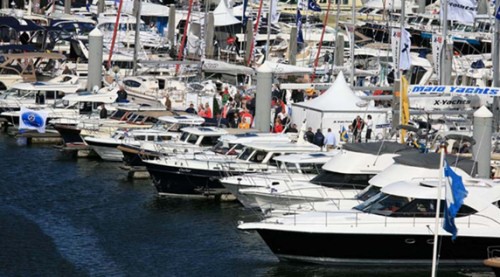
People are looking at boats differently these days. For many, they are an asset like a summer cottage and something to be held onto for a long time.
What Do We Mean By “Value”?
We don’t mean the lowest-priced boat on the market, because sometimes their value is very limited, nor do we mean the most expensive boat on the market, because some expensive boats are over-priced for what you get.
Rather, we are talking about finding a boat that will fit one’s needs as closely as possible, will be functional for many years to come, and when the owner goes to sell it, will have depreciated LESS than the average boat in its class – it may even be worth the same or more in 10-15 years.
Finding “Enduring Value” is Difficult
Boats are not a commodity. They are also complex, and often the most important factors are not apparent. That’s what makes finding good, long-term value difficult. It is the reason why BoatTEST.com was started 18 years ago – to help consumers sort out good value from the fluff, the solid, classic performers from the flavor-of-the-month, the outstanding from the mundane, the good but way over-priced from the solid performers.
Determine "Type" and "Class"
To find value in boats, as in most things in life, you must compare them. When doing this, be sure that you are comparing boats in the same “type” and “class.” For example, if you compare an outboard boat with a sterndrive, you are not comparing boats in the same “type.” Decide first which type boat you want: outboard or sterndrive, motoryacht or express cruiser, sedan or convertible. If you don’t know what type of boat would best serve you, step back, and ask what specifically you will be doing with your boat.
Then decide what “class” of boat you want to buy within that type. For example, an expensive 48’ (14.6 m) Hinckley express is not in the same class as a relatively inexpensive 34’ (10.4 m) Carver.
Size, level of quality or functionality, and price will define “class.” Once you have determined the type and class of boat you want, it is time to compare these important details. We suggest you do it on a yellow pad, making different columns for each boat.
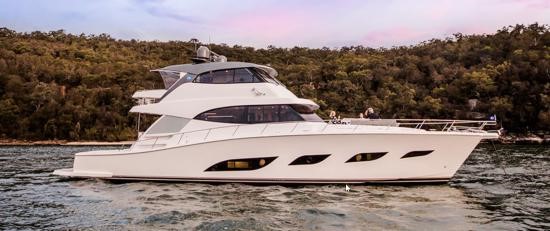
The Riviera 72 SMY is actually 78’3” (23.68 m) LOA and is one of the few builders that accurately characterizes its boats’ length.
1. Size of the Boat
Start by comparing LOA (length overall), but quickly look at beam and displacement (weight). It used to be that most builders used the measurement from the boat's stem to its transom as its LOA, but these days builders are all over the place with no one standard used by all, with some counting bow pulpits and swim platforms, and some not.
Virtually no American powerboat builder these days publishes the LWL (length waterline), which along with BWL (beam waterline), draft, and displacement are the four most important dimensions.
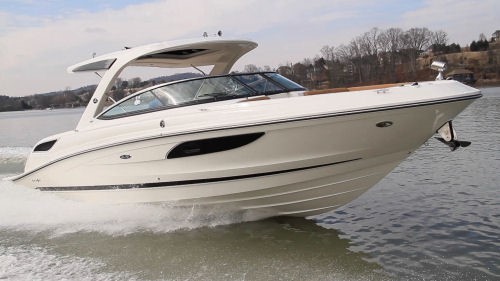
This Sea Ray 350 SLX is about in the middle of the displacement distribution for boats in this size and type. It is important to know why other boats that might be considered are heavier or lighter.
2. Price per Pound
Always compare the displacement of the boats you are considering. Make sure that the engines on all of the boats you are comparing are the same. Then divide the dry weight (not counting the weight of fuel, water, and personal gear) into the price to give the cost of the boat per pound. Obviously, each boat has different equipment and different components. Nevertheless, if you are comparing in class you are getting a rough idea of the relationship of the boats, one to another. If you can’t compare displacements with the same engines, then take the engine weight out before you compare. BoatTEST’s engine spec tables should help you with engine weights.
You might ask since we have already said that boats are not commodities, why we are looking at a price-per-pound figure. The answer is that all of the boats in “class” should come roughly in the same ballpark. If one is way out of the norm, either high or low, find out why. Sometimes, it is because the builder has added in the weight of the engines and trailer, for example.
In some cases, we might discover that the quality of the materials, hardware, fixtures, standard equipment, quality of joiner work, or man hours of labor that have gone into the fit and finish is the answer for the anomaly. And sometimes, we simply cannot come up with an explanation for a price-per-pound anomaly, either higher or lower. When that happens, you must dig deeper.
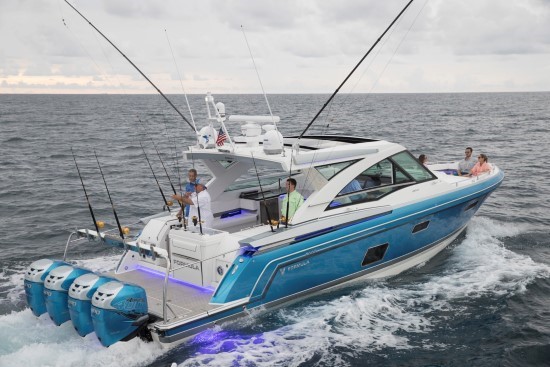
The Formula 430 All Sports Crossover has a 5-year warranty which is pretty much stem to stern except for the outboards which have a 3-year warranty from Mercury. Formulas are probably the most expensive boats in class but are widely considered to be a good value.
3. Overall Quality of the Boat
We’re here to tell you that you want a quality boat. You want value, but the “value boat” has to have quality, too, or you may be disappointed a few years later when the upholstery is falling apart, the wiring is shorting out, the bilge looks grungy, and you realize that the style of the boat is really out of date. Plywood is a cheap material and when used in the right places is fine, but in some small boats it can become water-soaked and soggy. It may warranty against rot, but not soaking up water.
Today, virtually all fiberglass boats have a bottom barrier coat of vinylester resin. That stops water osmosis and blistering. And, we rarely hear of a hull failure under normal use. Generally, a boat’s hull is the last thing consumers need to worry about when it comes to quality.
4. Warranty Is Important
Do not take warranties for granted. They are not all the same. Furthermore, do not assume that the warranty that you saw on a boat six months ago is the same one it has now. Read the fine print. Find out what it doesn’t cover.
While we all dream that our boats will be like a trouble-free Lexus, all too often that is not the reality. When you compare boats, line up their warranties: engine and drive train, hull and deck, upholstery and deck fixtures, and all the equipment inside. Pay particular attention to any warranty that may cover the gel coat.
Do all engine makers and boat builders approach warranty issues with an open mind and alacrity? The answer, sadly, is no. Some engine companies are notorious for sticking to the letter of the warranty, while others are more into the spirit of the contract or the spirit of making a customer for life by bending their rules in his favor. Some boat builders expect owners to return after a few months with a punch list of items to be fixed and others do not seem to.
You need to closely quiz the dealer as to his response in different hypothetical warranty situations. If you don’t have confidence in the dealer to make good on warranty issues, go elsewhere. If you are buying a boat from an importer, make sure you know who is going to pay for warranty work. In all likelihood it will be the dealer/importer, unless you have a document to the contrary.
Is the warranty transferrable? Most reputable builders make their warranties transferrable. If considering a boat that does not have a transferrable warranty, it is a red flag.
Most important, your warranty is worth nothing if the boat builder is out of business. It is wise to take the measure of the builder before buying.
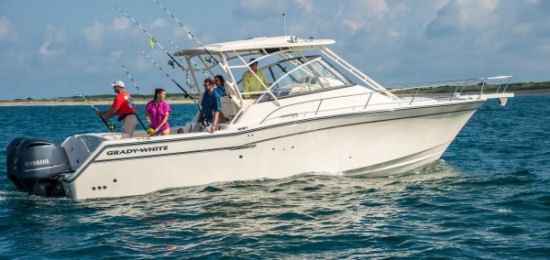
This Grady-White Express 330 is built by a company that has an excellent reputation for customer service. Find out if the brands being considered have that as an important part of the culture – or is it all about price?
5. Customer Service
The level of customer service in the boat industry has risen mightily in the last 10 years. You must look to your dealer for the service. It is his responsibility. If you buy a boat brand that has a good reputation from a dealer that does not have a good reputation, you might have a problem. Generally speaking, throughout our years in business we have found that inexpensive boats have the lowest levels of customer service. There are exceptions, such as the White River Marine Group, which is the largest boat builder in the U.S., and is so big that it can afford to have a customer service program that is responsive. But, small builders with thin infrastructure usually don’t have the resources or the manpower to adequately take care of customers when there is a problem out of the ordinary.
BoatTEST has zero-tolerance for dealers and builders not fixing warranty items in a reasonable period of time. If the dealer and builder are unresponsive, do not hesitate to contact BoatTEST.
6. Equipment, Utility, and Amenities
Every builder is trying to make his boat attractive to the buyer. Some will play the low-price card, others will pack a boat with equipment as standard that is usually found on the option list, still others will offer greater utility, some will load it up with gimcracks, and others will appeal to your sense of style and aesthetics.
Quantify the expensive items of equipment and put a dollar amount to it. If you don’t know the value, simply Google it. If the boat you are looking at is under-equipped compared to others in class, but the same price, ask the dealer to justify the difference. He may have a very good answer.
“Utility” is harder to compare, but it is very important. Obviously, if you can do more things with one boat than with another, it has more utility and provides more value. Beam often comes into play here. Some builders have a boat that is as long as its competition and is priced about the same, but has a foot less on the beam. This boat won’t have as much room inside (read: “utility”) that the beamier boat will have. There will also be less material in the boat, so it will be lighter.
In small boats, does the helm seat fit your body? Is there enough room for your whole family? Is the boat easy or hard to get into? Can you actually sit on the porta-potty in the console compartment, or was it made for Yoda? “No” answers to questions like these indicate a lack of utility for you.
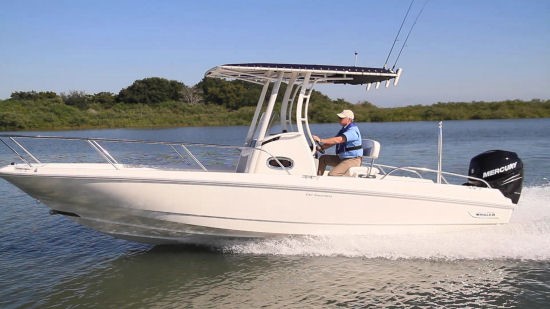
This Boston Whaler 240 Dauntless is designed for coastal work, and the company makes sure that the horsepower of the standard engines provided will give good performance. The standard engine (225-hp) on this 4,653-lb. (tested weight) boat is enough to get her into the low- to mid-40s. Our test boat had a 250-hp engine that added about 3 mph to her top speed.
7. Performance, Including Fuel Economy and Range
A boat that is under-powered is not a good value, not even if the dealer tells you it is. The #2 complaint we get about small boats (after the helm seat) is that the boat bought was “under-powered.” Being under-powered means a different thing for different boats. Check BoatTEST.com performance tests before buying. Note that most of the tests are with two people aboard and usually have half fuel or less.
Ask yourself what your boat’s mission in life is, then determine what are the most important performance characteristics for that mission: best cruise speed, mpg, range, time to plane, etc. Know what performance numbers you want to achieve. Tell that to the dealer and ask him to make a recommendation that will make you a happy customer.
Remember that when it comes to performance, having the right prop is critical. When it comes to propping, make the dealer “part of the crime” – in other words, tell him the performance you want and ask him to suggest the right prop.
8. The Engine and the Engine Brand’s Reputation
After the brand and model of your boat, the most important component is the engine. 40’ cruisers with gas engines sell for less than the same boat with diesels – but it is not necessarily a better value. You must be careful to match the type and horsepower of an engine to the application.
Resale is a constant theme that underlies a lot of issues on your boat. Will such-and-such brand, horsepower or type of engine raise or lower the value of the boat when you go to sell? Certain brand names have different reputations in different parts of the country. Make sure you are in tune with any local proclivities. Transferrable warranties could be important.
The advancements that have come along the last 10 years in boat propulsion such as joysticks, bow thrusters, and drive-by-wire control are important. These items of equipment offer greater utility, speed, or fuel economy, or maybe all three. They are expensive, and boaters did without them until just recently. But what will buyers of your used boat want? Making sure that your boat is equipped with these items will be important to the long-term value of the boat.
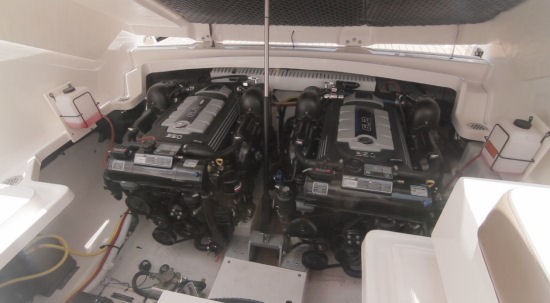
This is the engine room in a Chaparral 337 SSX powered by twin Mercury 6.2 Liter 300-hp engines. Chaparral management is well-known in the industry for giving their customers what they want. Note the clean engine room bilge.
9. Quality of the Builder’s Management
Corporate culture is terribly important when it comes to boats – in fact, we think it is the single most important thing driving a successful experience for the owner. A dedicated boat builder (either as owner or a hired president) will be working hard to make sure the boats his/her company builds are everything they can be and that customers are happy.
On the other hand, company presidents who are focused on their annual bonus, selling the company, climbing the corporate ladder, projecting their own ego, playing a lot of golf, or haven’t a clue as to what is going on, exude an attitude that is quickly picked up by the rest of the staff down the hall, and then out on the shop floor. Unfortunately, in many cases, that attitude ends up affecting the quality and fit and finish of the boat. The lack of top management involvement can also negatively affect good customer service, warranty policy, and customer satisfaction. It happens all of the time.
This issue is more important now than ever before since there is a tremendous consolidation going on in the boat business. Private equity funds ae buying up boat companies left and right, and most are planning on flipping them during the next boom. Some of these companies don’t know what they’re doing (if they did, they wouldn’t be putting their investors’ money at risk in the boat business). Some others seem to be on the right track and going for high quality, utility, and value.

Ultimately, your own psyche is the key to finding a boat that will have long-term value. What are your values, needs, and plans for the future? What kind of boat fits all three?
10. Look at Yourself
Your ultimate satisfaction with the boat you buy, and its long-term value to you, probably depends more on your own expectations, psychology, boating experience, and life-outlook than on the boat you buy.
Think ahead. If you don’t think you will want to climb ladders in 5-10 years, don’t by a flybridge boat, buy an express. If you and your bride will be living on Social Security in 10 years, get a low-maintenance boat paid for now that will keep you happy in the golden years when your only expense will be fuel and a little insurance.
Buy a boat for the right reasons – recreation for the family, retirement living, or a passion for fishing, something that rarely fades with time. Remember, for most people, their children will have children, so a whole new generation can be introduced to the fun and enjoyment of boating, and there is nothing as gratifying as seeing small children have a good time in the water around a boat.